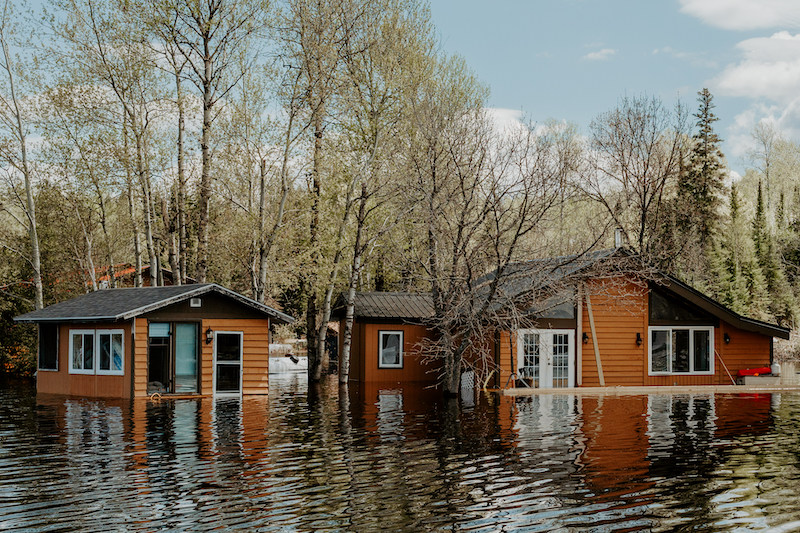Pikangikum First Nation, Sioux Lookout and other northwestern Ontario communities remain in crisis after water levels swamped the province throughout the month of May. As of June 3, 14 First Nations had declared a flooding emergency along with eight neighbouring municipalities. The Surface Water Monitoring Centre issued a provincial flood watch for the entirety of northwestern Ontario June 4.
Rapidly melting snow and unprecedented rainfall since early April caused water levels this spring to surge past previous records set in 2014.
Ontario’s two new disaster relief programs, Disaster Recovery Assistance for Ontarians (DRAO) and Municipal Disaster Recovery Assistance (MDRA), began in 2016 and offer financial and social aid to those affected by natural disasters. However, First Nations communities are ineligible for these programs.
But the response from First Nation communities is founded on advanced emergency relief strategies, as well as strong communication and support systems between nations.

The Independent First Nations Alliance (IFNA) is focused on building Indigenous self-reliance and providing “customized support” to Whitesand, Lac Seul, Kitchenuhmaykoosib Inninuwug, Muskrat Dam, and Pikangikum First Nations.
Nicholas Rhone, IFNA’s Integrated Emergency Services Director, told the Nation there is a community-led response to the floods.
“We assisted [Pikangikum] with monitoring the water treatment plan, water testing, and general administration and coordination tasks,” he said.
Rhone praised Chief Dean Owen and the entire Pikangikum First Nation for their ability to find quick solutions. When the flooding began, the community swiftly responded, helping reduce damages and safety threats.
“Throughout [the floods], the community has been handling multiple emergencies at the same time,” said Rhone, citing a Covid-19 outbreak that occurred shortly after the flooding started. “Chief Owen and his council have done a great job keeping their community safe, no matter what they have faced in the past years.”
Rhone says this example serves as a reminder that those most affected by emergencies become experts in short order and should be involved in coordinating response efforts.
“The takeaway from the crisis is that we must continue to empower Indigenous communities and support them with what they need, when and how they need it,” he concluded.
The flooding also devastated Ontario municipalities that provide health and essential services for remote First Nations.
Sioux Lookout Mayor Doug Lawrance expressed concern for infrastructure and the affected population. While the crisis began in May, Lawrance said, flooding in Sioux Lookout and adjacent communities remains a major and immediate problem as June begins.
“The water has yet to recede,” he observed. “It’s just not going down.”

More than a quarter of the 536 square-kilometre area of Sioux Lookout consists of lakes and wetlands, making residents of lower-lying neighbourhoods vulnerable to flooding and related issues.
“Our lake [Minnitaki] has risen to levels not seen since 1954,” said Lawrance. “Over 20 households have been evacuated and 30 more have experienced major flooding damages.”
Commercial and health sectors are also experiencing major losses, which has had a rippling effect on the rest of northwestern Ontario. Known as The Hub of the North, Sioux Lookout provides health services for over 30 surrounding First Nations; members fly in for medical aid and the municipality’s largest hotel accommodates the health centre’s common overflow. Unfortunately, flooding has forced the hotel to close, and 120 rooms were lost to water damage.
Lawrance called for a change to provincial policy and emphasized that “the immediate concern is for the families who have been displaced, the homes that have been damaged, and how we can get relief for them.”
Despite a history of annual flooding and the current emergency situation, Sioux Lookout, along with other northwestern municipalities and First Nations, remains off the list of the province’s declared flood areas.
“[Being] declared a flood area by the province would help people get access to provincial assistance,” Lawrance asserted, explaining how the municipality’s request for approval has yet to be answered. Ontarians who do not reside in declared flood zones often experience added difficulties when applying for the DRAO relief program.
“We haven’t been rejected but we haven’t been accepted either. This generation is experiencing the highest flood levels in 60-70 years [and] we still can’t get a definitive answer.”





